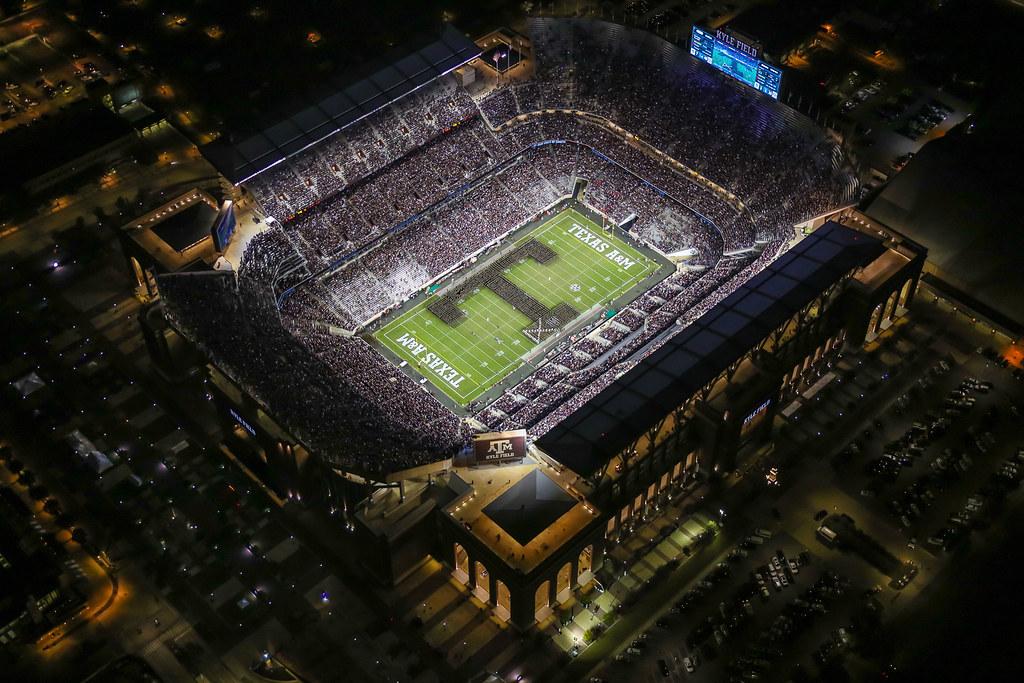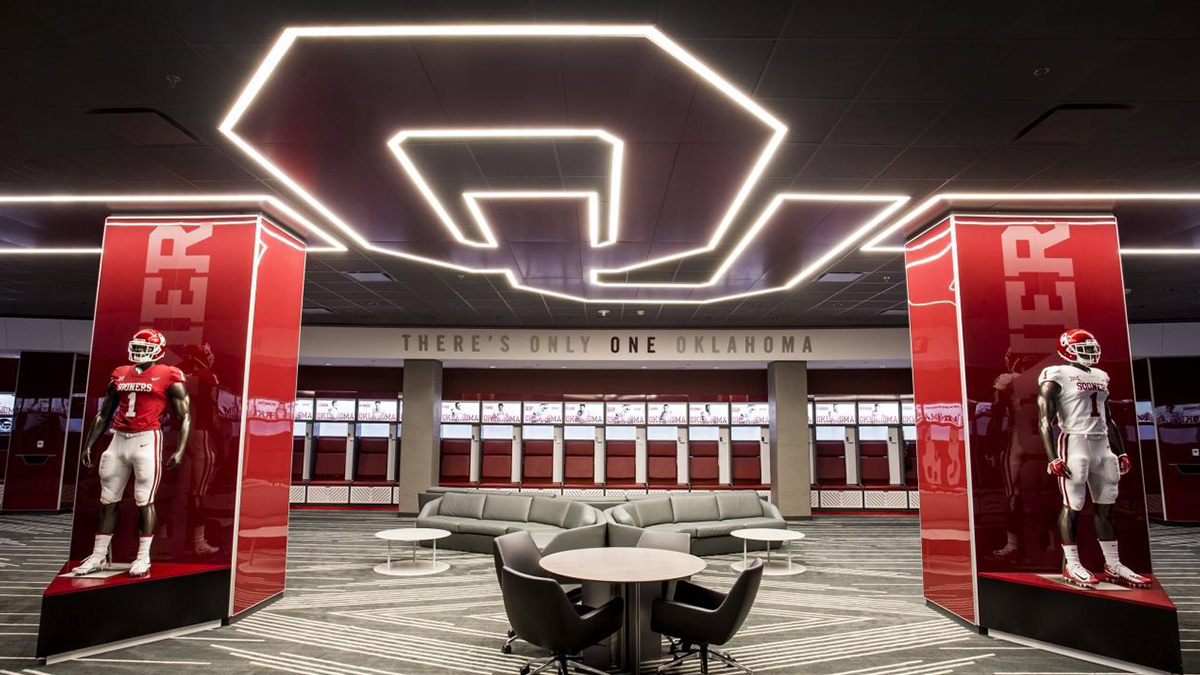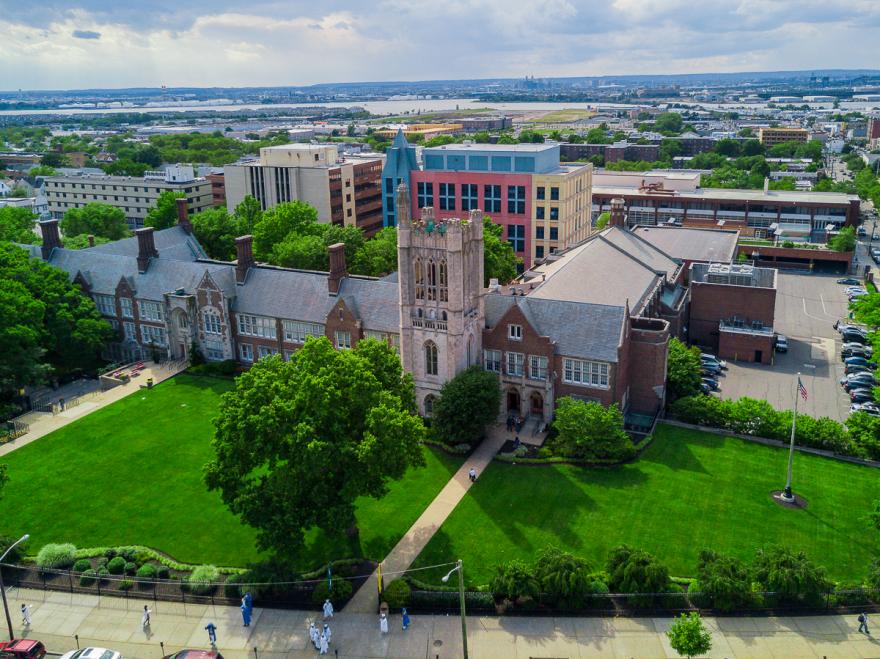Everybody knows: college sports are a community. It has its own famous athletes, fans, trainers, championships, training facilities and stadiums. Stadiums are one of the essential links to create an unforgettable atmosphere. As you all know, American football is the biggest sport in America. Therefore, the stadiums need to be enormous and need to provide enough seats for all the fans of both playing sides. Check out the 15 largest stadiums in college sports. Not surprisingly, all the stadiums are Football stadiums.
15. Doak Campbell Stadium – 82,300 – Florida State University
The stadium (opened in 1950) is the home field of the Florida State Seminoles football team playing. The stadium us named for the university’s president from 1941 to 1957: Doak S. Campbell.
FUN FACT: The field at Florida State’s stadium officially dedicates coaching legend Bobby Bowden.
14. Jordan-Hare Stadium – 87,451 – Auburn University
Jordan-Hare stadium is the home field of the Auburn University Tigers football team. The stadium has its name for Ralph Jordan and Cliff Hare. Ralph Jordan had the most wins in school history. Cliff Hare is a member of Auburn’s first football team as well as dean of the Auburn University School of Chemistry and President of the Southern Conference.
FUN FACT: The playing field at the stadium has its name in honour of former Auburn coach and athletic director Pat Dye.
13. Ben Hill Griffin Stadium – 88,548 – University of Florida
Ben Hill Griffin Stadium is the stadium for the Florida Gators. The stadium arised in 1930 with a capacity of about 22,000 and has been expanded several times. 90.000 football games have been played in the stadium. The stadium has its name for Ben Hill Griffin JR., a benefactor of the sport program in 1989.
FUN FACT: The stadium is well-known as “the swamp”. GATORS!
12. Memorial Stadium – 92,000 – University of Nebraska-Lincoln
The stadium dates from 1923 and originally had a capacity of 31,080. A series of expansions has brought the stadium to its current capacity of 92,000. When full, Memorial Stadium holds more people than all but two Nebraska cities (Omaha and Lincoln). The stadium is an honour of all Nebraskans who served in the Civil and Spanish-American Wars and those 751 Nebraskans who died in World War I. Later, the stadium would also honour the 3,839 Nebraskans who died in World War II, the 225 who died in Korea, and the 422 who died in Vietnam.
FUN FACT: The Nebraska Cornhuskers are currently riding an NCAA record-setting 334 consecutive home sold-outs dating back to 1962.
11. Rose Bowl – 92,542
The stadium is recognised as a National Historic Landmark and a California Historic Civil Engineering Landmark. One of the most famous venues in sporting history, the Rose Bowl is best known as a college football venue, specifically as the host of the annual Rose Bowl Game for which it is named. The stadium also hosted five Super Bowl games, second most of any venue and hosted a few soccer matches. Multiple college teams use the facility for games, including UCLA.
FUN FACT: The stadium arised in 1922, but the UCLA Bruins didn’t call this historical site home officially until 1982 when they moved from the Los Angeles Coliseum.
10. Sanford Stadium – 92,746 – University of Georgia
Architecturally, the stadium is known for its numerous expansions over the years that have been carefully planned to fit with the existing “look” of the stadium, making it an intimidating atmosphere. The stadium got its name for Dr. Steadman Vincent Sanford, an early major force behind UGA athletics.
FUN FACT: The stadium arised on the University of Georgia’s campus in 1929 and cost just $360,000 to build.
9. Los Angeles Memorial Coliseum – 93,607 – University of Southern California
The Coliseum arised in 1921 as a memorial to L.A. veterans of World War I. It became national Landmark in 1984. It used to be the home of the Los Angeles Rams of the NFL from 1946 to 1979. The Trojans are currently using the stadium but need to share it with a lot of different teams and tournaments.
FUN FACT: The state of California owns the LA Coliseum and the Trojans manage and operate in LA Coliseum. In 2013, USC signed a 98-year lease with the state of California, agreeing to pay $1 million a season in rent and $170 million in renovations over the course of the contract.
8. Darrel K. Royal-Texas Memorial Stadium – 100,119 – University of Texas
The stadium has been home to the Longhorns since 1924. The University of Texas honoured legendary football coach Darrell K Royal, who enlisted in the US Army Air Corps in 1943, and who led Texas to three national championships and eleven Southwest Conference titles, by officially naming the stadium after him in 1996.
FUN FACT: In 2009, the home of the Texas Longhorns became the first stadium in Texas to reach the 100,000 seats benchmark.
7. Bryant-Denny Stadium – 101,821 – University of Alabama
It is the home field of the Tide Football team. Arised in 1929, the stadiums name was Denny Stadium in honour of George H. Denny, the school’s president from 1912 to 1932.
FUN FACT: While the University of Alabama has seen a lot of success at Bryant-Denny, many of the Tide’s big games were played at Birmingham’s Legion Field, including the annual Iron Bowl and matchup with Tennessee. It wasn’t until 2003 that all of Alabama’s home games were to be played solely at Bryant-Denny.
6. Tiger Stadium – 102,321 – Louisiana State University
Tiger Stadium opened with a capacity of 12,000 in 1924. Renovations and expansions have brought the stadium’s current capacity. Alabama head coach Bear Bryant once remarked that “Baton Rouge happens to be the worst place in the world for a visiting team. It’s like being inside a drum.” In 2001, ESPN reporter Adrian Karsten said, “Death Valley in Baton Rouge is the loudest stadium I’ve ever been in.”
FUN FACT: The name “Death Valley” is up for a debate. One story goes that LSU’s name is “Deaf Valley” due to its loud atmosphere. Over time, it morphed into “Death.” Another theory is it was always named “Death Valley” but due to thick Louisiana accents, people misheard “Deaf,” hence all the naming confusion.
5. Neyland Stadium – 102, 455 – University of Tennessee
It serves as the home of the Tennessee Volunteers football team and has been a location for several National Football League (NFL) exhibition games. Constructed in 1921 as Shields–Watkins Field (which is now the name of the playing surface), the stadium has undergone 16 expansion projects. The stadium has its name for Robert Neyland, who served three stints as head football coach.
FUN FACT: The stadium is occasionally used for concerts, political rallies, and religious gatherings.
4. Ohio Stadium – 104, 944 – Ohio State University
Its primary purpose is the home venue of the Ohio State Buckeyes football team; it also serves as the site for the university’s Spring Commencement ceremonies each May. The Buckeyes’ stadium is also listed on the National Registry of Historic Places.
FUN FACT: The stadium has three nicknames: the horseshoe, the shoe and the house that Harley built.
3. Kyle Field – 106,512 – Texas A&M University
It has been the home to the Texas A&M Aggies football team in rudimentary form since 1904. In the fall of 1904, Edwin Jackson Kyle, an 1899 graduate of Texas A&M and professor, was named president of the Athletics. Kyle wanted to develop an athletic field to promote the school’s athletics. As result, there was Kyle Field.
FUN FACT: As part of a $450 million expansion, The Home of the 12th Man will lower the number of seats available to 102,500.
2. Beaver Stadium – 106,572 – Pennsylvania State University
The stadium has its name for James A. Beaver (not an animal) who was a former governor of Pennsylvania (1887–91), president of the university’s board of trustees and native of nearby Millerstown, Pennsylvania. Beaver Stadium is one of the toughest venues for opposing teams in collegiate athletics.
FUN FACT: Instead of starting from scratch, workers tore down the existing Beaver Field into 700 pieces and moved them a mile across campus only to be reassembled as the basis of Beaver Stadium.
1. Michigan Stadium – 109,901 – University of Michigan
Every home game since November 8, 1975 has drawn a crowd in excess of 100,000, an active streak of more than 200 contests. “The Big House” has also hosted hockey games including the 2014 NHL Winter Classic with an official attendance of 105,491, a record for a hockey game. Additionally, a 2014 International Champions Cup soccer match between Real Madrid and Manchester United had an attendance of 109,318, a record crowd for a soccer game in the United States.
FUN FACT: The Big House arised in 1926 on top of an underground spring. The water created a quicksand-like surface that engulfed an entire crane that remains under the stadium today. Also, the seating capacity number is a palindrome: 1-0-9-9-0-1.
Have you ever been in one of these stadiums? Or would you like to be a part of college sports? Contact us and we will be happy to tell you more!






